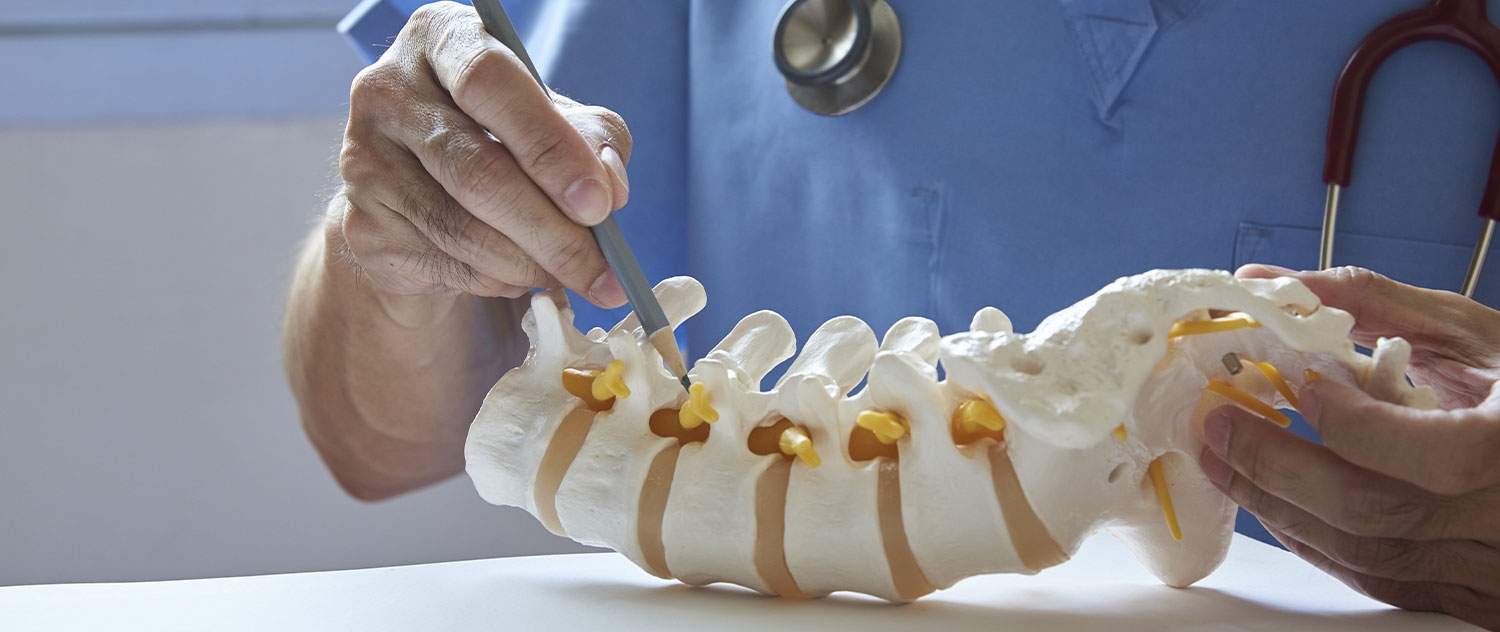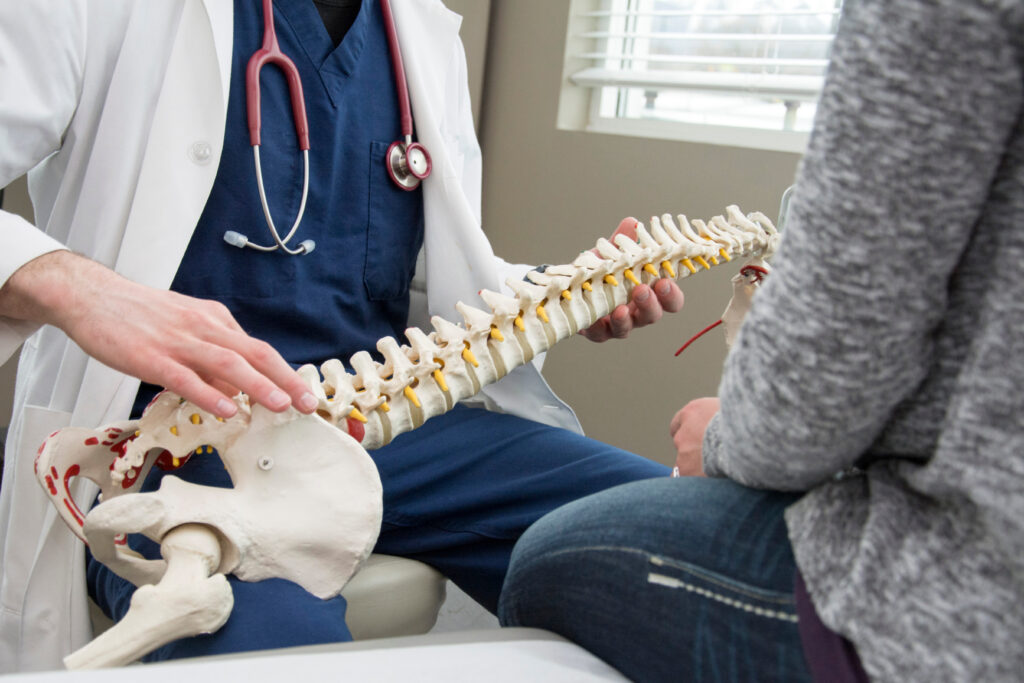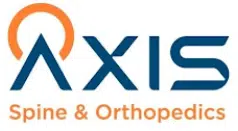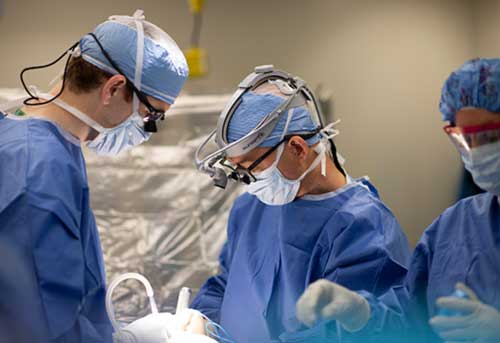Just how to Get ready for Visits to the Best Spine Surgeons in St Louis MO
Just how to Get ready for Visits to the Best Spine Surgeons in St Louis MO
Blog Article
A Summary of Back Problems That Usually Cause Surgical Therapies
Spinal column problems such as herniated discs, spinal constriction, and degenerative disc condition frequently necessitate surgical interventions when conventional therapies fall short to reduce consistent signs. These conditions not just lead to significant discomfort however can likewise badly harm day-to-day performance and total quality of life. Understanding the nuances of each condition and the corresponding surgical choices, such as discectomy or back fusion, is important for efficient administration. As we discover these conditions further, it ends up being obvious that the decision-making procedure surrounding surgical therapy is complex and warrants mindful factor to consider.
Herniated Discs
Although several people with herniated discs might discover relief with conservative therapies, surgical treatment becomes a needed consideration when signs and symptoms aggravate or persist - best spine surgeons in st louis mo. A herniated disc happens when the soft internal gel of a spine disc protrudes via its outer layer, possibly compressing close-by nerves and leading to discomfort, pins and needles, or weak point in the extremities
Conservative monitoring generally consists of physical therapy, pain medicines, and corticosteroid injections, which aim to lower inflammation and enhance feature. In instances where these methods stop working to alleviate incapacitating signs and symptoms, medical choices might be checked out.
The most usual operation for herniated discs is a discectomy, which includes the elimination of the herniated section of the disc to alleviate pressure on the affected nerve origin. In extra severe cases, spinal combination might be essential to stabilize the affected vertebrae.
Clients are encouraged to review the possible dangers and benefits of surgical treatment with their doctor to make an informed decision. Ultimately, the goal of any surgical intervention is to restore function, alleviate pain, and improve total top quality of life for people enduring from herniated discs.
Back Constriction
Back constriction takes place when the rooms within the spinal column slim, causing boosted stress on the spine and nerves. This condition can develop in various areas of the back, consisting of the cervical and back locations, often because of age-related modifications, such as degenerative disc illness, arthritis, or thickening of tendons.
Individuals with spine stenosis may provide with symptoms that include discomfort, tingling, tingling, or weakness, largely in the legs or arms. These signs and symptoms can be worsened by tasks that entail standing or strolling, commonly leading people to look for alleviation via traditional treatments like physical treatment, medicines, or epidural steroid injections.
However, when these non-surgical treatments fail to provide appropriate alleviation, surgical alternatives may be considered. Typical operations for spinal constriction include laminectomy, which entails the elimination of part of the vertebra to relieve pressure, and back combination, which maintains the afflicted location. The decision to go after surgery is typically based on the extent of signs, the degree of practical problems, and the general wellness of the client. Motivate medical diagnosis and management are essential to stop more neurological concession and improve top quality of life.
Spondylolisthesis
Spondylolisthesis takes place when one vertebra slides ahead over an additional, causing misalignment of the back. This problem can result from various aspects, consisting of genetic defects, trauma, or degenerative modifications in the spinal column. It is most generally observed in the back region, particularly at the L4-L5 and L5-S1 levels.

Treatment alternatives differ based upon the extent of the slippage and the signs provided. Conservative steps, consisting of physical therapy, pain management, and activity alteration, are typically the first line of defense. Nevertheless, when non-surgical methods fail to soothe signs and symptoms or when considerable nerve compression exists, medical intervention may be necessitated. Surgical choices can include back combination or decompression procedures, intended at restoring placement and relieving neurological signs. Early medical diagnosis and proper management are vital for optimal end results in clients with spondylolisthesis.
Degenerative Disc Condition

The condition can be diagnosed through a combination of clinical evaluation, imaging researches, and individual history. When these methods fail to give appropriate alleviation, surgical treatments might be thought about.
Surgical options for DDD might include back combination or synthetic disc substitute, focused on stabilizing the impacted section and alleviating discomfort (best spine surgeons a knockout post in st louis mo). Eventually, the selection of therapy is individualized, considering the seriousness of the problem, individual health, and way of living aspects
Back Growths

Spine growths can develop go to my blog from different aspects, including genetic predisposition, environmental impacts, and pre-existing clinical problems. Individuals may provide with a variety of signs, including local pain, neurological shortages, weak point, or adjustments in digestive tract and bladder feature, depending on the lump's dimension and area.
Surgical intervention might be required to alleviate signs and symptoms, acquire a biopsy, or get rid of the lump completely. The objective of surgery is commonly to decompress neural aspects and maintain the spine. Early detection and treatment are crucial for enhancing end results in patients with spine lumps.
Conclusion
In summary, spinal column problems such as herniated discs, spinal stenosis, spondylolisthesis, degenerative disc illness, and back tumors often require medical intervention because of their possible to cause considerable discomfort and functional impairment. While conventional therapies may use short-lived relief, surgical choices end up being important when signs and symptoms aggravate or continue. Prompt medical diagnosis and treatment play a crucial role in restoring function and improving the lifestyle for afflicted individuals, highlighting the relevance of comprehensive spinal care.

Report this page